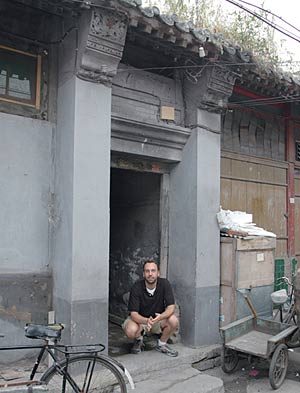A firsthand account of the Chinese capital's struggles to preserve its past in the face of rapid development and Olympic glory.
In 1988, national policy was changed to allow local governments to raise resources through the property market. The state still owned the land, but it could transfer usage rights. Municipalities put a parcel of land on the market; developers bid for its rights; the winning bidder paid for its long-term lease, usually 70 years. The developer could build on the land or apportion the property and sell off parcels. Given a lack of property taxes or municipal bonds, property transfers became the key to a city’s growth.
The ODHR program was launched as property prices skyrocketed. Between 1990 and 1995, Beijing’s 20 real estate companies grew to more than 600. The revised city plan announced the creation of a “Central Business District” east of the historic core, and a “Financial Street” to its west, though it retained height restrictions around the Forbidden City.
While the majority of residents were eager to move out of shared, dilapidated courtyards into their own modern apartments, many did not want to be marooned in the far suburbs, away from their inner-city neighborhoods. A common saying went, “Hope for razing, fear razing”—pan chai, pa chai. Among residents’ complaints, the lack of transparency was near the top. At the Beijing City Planning Exhibition Center, where models depict the capital’s future form, authorities responded to visitor complaints by adding a warning to the ticket window: “The exhibits do not detail demolition plans. Please buy your tickets with prudence. No refunds.”
Even a neighborhood’s designation as one of the “Twenty-five Historic Areas in Old Beijing City” does not guarantee its protection. This preservation plan covers 17 percent of the inner city. When combined with already protected spaces—former imperial parks and palaces—this area marks a total of 38 percent (9 square miles) of Old Beijing as protected, leaving the rest open to destruction.
In 2002, shortly after the announcement of the Twenty-Five Historic Areas, the district government said that one of the included areas, a neighborhood named Nanchizi near the Forbidden City’s east moat, would be destroyed, in order to be preserved.
“This is all a real estate scam,” a resident was quoted in the local press. “They say our house is too old and falling apart, but they won’t let us fix it up ourselves because they want the land. What’s intolerable is that our centuries-old houses will be replaced with newly built, ancient-style, two-story buildings.” Today, the rebuilt neighborhood is a quiet bedroom community at the heart of Beijing, and a popular address for officials.
A similar outcry met the closing of Front Gate Avenue, the artery that connects Tiananmen Square to the Temple of Heaven, in Beijing’s south. In the winter of 2005, the shuttered shops displayed computer-generated drawings of the gray-brick, old-looking buildings that were to come. In large characters, a slogan said, “Protect the ancient city’s appearance.” In the drawing, the people strolling on the future, pedestrian-only Front Gate Avenue weren’t Chinese, but Caucasian. The only shop signs depicted Pizza Hut and Starbucks.
On a billboard that covered the destruction of a building, a slogan promised: (The ancient capital reappears).
Overnight, someone had neatly excised part of the second character, so it read: (Farewell, ancient capital).
The Front Gate Avenue project—since renamed Heavenly Avenue—involves SOHO China, one of the nation’s highest-profile developers, known for hiring “starchitects” to create live-work communities, as well as the Commune by the Great Wall, a collection of houses now managed as a hotel. “The Front Gate area was part of my childhood memories,” recalled SOHO C.E.O. Zhang Xin, who grew up in Beijing. “I was surprised how dilapidated it had become. I said, ‘Maybe we can do something.’ It needs development, but it also needs conservation.”





Post a comment to this article
Report Abusive Comment